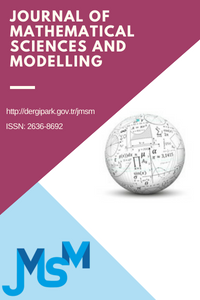Asymptotic Bound for RSA Variant with Three Decryption Exponents
Asymptotic Bound for RSA Variant with Three Decryption Exponents
Asymptotic, Bound, Cryptanalysis Decryption, Exponents, RSA variants,
___
- [1] A. May, Secret exponent attacks on RSA-type schemes with moduli N = prq, Proceedings of 7th International Workshop on Theory and Practice in Public Key Cryptography, (2004), 218-230.
- [2] M. Zheng, H. Hu, Cryptanalysis of prime power RSA with two private exponents, Sci. China Inf. Sci., 58 (2015), 8 pages.
- [3] Y. Lu, R. Zhang, L. Peng, D. Lin, Solving linear equations modulo unknown divisors: Revisited, International Conference in the Theory and Application of Cryptology and Information Security, (2015), 189-213.
- [4] S. Sarkar, Small secret exponent attack on RSA variant with modulus N = prq, Des. Codes Cryptogr. 73(2) (2014), 383-392.
- [5] S. Sarkar, Revisiting Prime Power RSA, Discrete Applied Mathematics, 203 (2016), 127-133.
- [6] R. L. Rivest, A. Shamir, L. Adleman, A method for obtaining digital signatures and public-key cryptosystems, Commun. ACM, 21 (1978), 120-126.
- [7] M. Wiener, Cryptanalysis of short RSA secret exponents, IEEE Trans. Inf. Theory, 36(3) (1990), 553-558.
- [8] S. I. Abubakar, M. R. K. Ariffin, M. A. Asbullah, A new simultaneous diophantine attack upon RSA moduli N = pq, In Cryptology and Information Security Conference, (2018), 119-131.
- [9] M. K. R. Ariffin, S. I. Abubakar, F. Yunos, M. A. Asbullah, New cryptanalytic attack on RSA modulus N = pq using small prime difference method, Cryptography, 3(1) (2019), 2.
- [10] T. Takagi, Fast RSA-type cryptosystem modulo pkq, Advances in Cryptology-CRYPTO, 1998 (1998), 318-326.
- [11] D. Boneh, G. Durfee, N. Howgrave-Graham, Factoring N = prq for large r, Proceedings of 19th Annual International Cryptology Conference, (1990) (1990), 326-337.
- [12] A. Takayasu, N. Kunihiro, Better lattice construction for solving multivariate linear equations modulo unknown divisors, Proceedings of the 18th Australian Conference (ACISP 2013), (2013), 118-135.
- [13] A. Nitaj, Diophantine and lattice cryptanalysis of the RSA cryptosystem, Artificial Intelligence, Evolutionary Computing and Metaheuristics, (2013), 139-168.
- [14] A. K. Lenstra, H. W. Lenstra, L. Lovasz, Factoring polynomials with rational coefficients, Math. Ann., 261 (1982), 513-534.
- [15] N. Howgrave-Graham, Finding small roots of univariate modular equations revisited, Darnell M. Cryptography and Coding, (1997), 131-142.
- ISSN: 2636-8692
- Yayın Aralığı: Yılda 3 Sayı
- Başlangıç: 2018
- Yayıncı: Mahmut AKYİĞİT
Asymptotic Bound for RSA Variant with Three Decryption Exponents
Saıdu ISAH ABUBAKAR, Ibrahim ZAİD, Amınu ALHAJI IBRAHIM
Existence and Decay of Solutions for a Parabolic-Type Kirchhoff Equation with Variable Exponents
Erhan PİŞKİN, Gülistan BUTAKIN
Set-Valued Control of Cancer by Combination Chemotherapy
Lacunary Statistical Convergence for Double Sequences on $\mathscr{L}-$ Fuzzy Normed Space
Reha YAPALI, Husamettin COŞKUN
Training Data Generation for U-Net Based MRI Image Segmentation using Level-Set Methods
